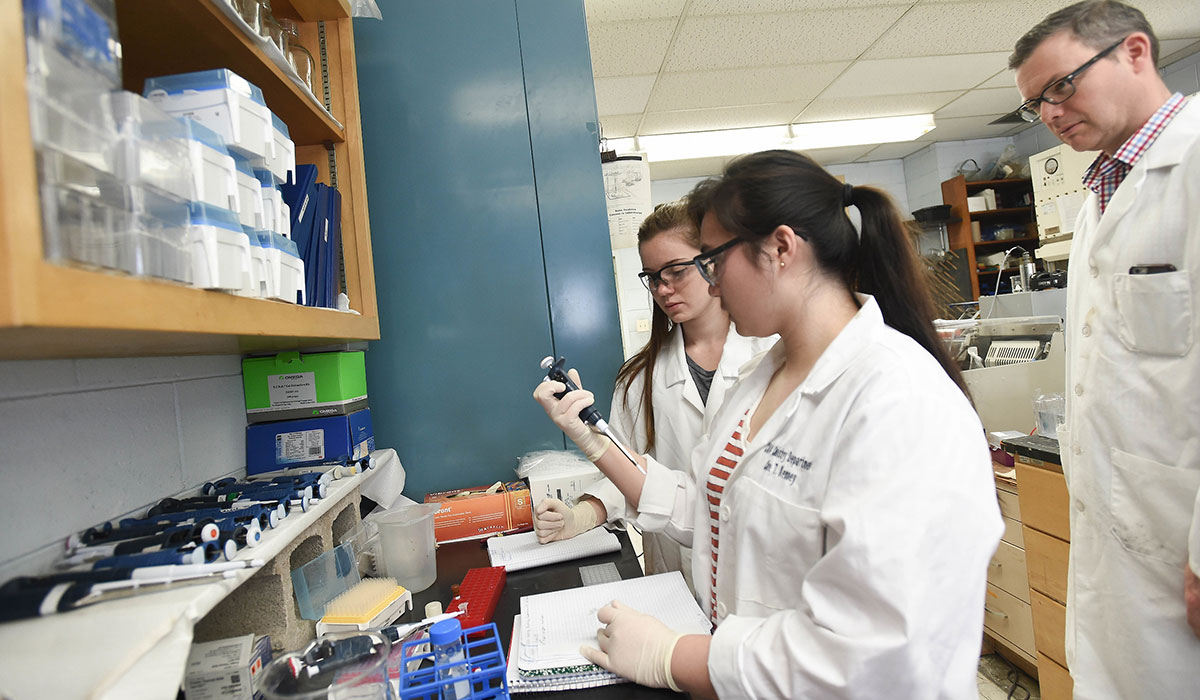
When it comes to the field of biochemistry, there are a multitude of fascinating techniques that scientists employ to study and understand the intricate workings of living organisms. From the analysis of DNA and proteins to the exploration of metabolic pathways and enzymatic reactions, biochemistry techniques play a crucial role in unraveling the complexities of life on a molecular level.
In this article, we will explore 11 extraordinary facts about biochemistry techniques. These techniques not only aid in the discovery of new drugs and therapies but also provide valuable insights into fundamental biological processes. So, let’s dive into the world of biochemistry and uncover the incredible methods used by scientists to unlock the secrets of life.
Key Takeaways:
- Biochemistry techniques like PCR and electrophoresis help scientists study DNA and proteins, leading to medical breakthroughs and genetic discoveries.
- Advanced methods like mass spectrometry and X-ray crystallography provide detailed insights into protein structures, aiding in drug development and disease treatment.
The Polymerase Chain Reaction (PCR) revolutionized genetic research.
The PCR technique, developed in the 1980s, allows scientists to amplify specific DNA sequences, enabling the detection and analysis of minute amounts of genetic material.
Electrophoresis is a key technique for separating DNA fragments.
Through electrophoresis, DNA molecules are separated based on their size and charge, facilitating numerous applications such as DNA sequencing and genetic fingerprinting.
Western blotting is used to detect specific proteins within a sample.
By employing antibodies that bind to target proteins, this technique enables researchers to identify and quantify specific proteins from complex mixtures.
Fluorescence microscopy allows for imaging of cellular structures and molecules.
By using fluorescent dyes or proteins, researchers can visualize and study various cellular components, such as organelles, cytoskeletal elements, and specific molecules.
Mass spectrometry is a powerful technique for identifying and quantifying proteins.
This technique measures the mass-to-charge ratio of ionized molecules, providing valuable information about protein structure, composition, and abundance.
DNA sequencing revolutionized the field of genomics.
Advancements in DNA sequencing techniques have made it possible to decipher the complete genetic code of organisms, leading to groundbreaking discoveries in various fields, including medicine and agriculture.
Site-directed mutagenesis enables precise manipulation of DNA sequences.
Using this technique, scientists can introduce specific mutations into DNA molecules, allowing them to study the functional consequences of genetic alterations in a controlled manner.
Protein crystallization is vital for determining protein structures.
By growing protein crystals and analyzing their diffraction patterns, scientists can determine three-dimensional protein structures, aiding in the understanding of their functions and interactions.
Enzyme-linked immunosorbent assay (ELISA) is widely used in medical diagnostics.
ELISA allows for the rapid and sensitive detection of various molecules, including hormones, antibodies, and antigens, contributing to the diagnosis of diseases and monitoring of therapeutic treatments.
Microarray technology enables the simultaneous analysis of gene expression.
This technique allows researchers to measure the expression levels of thousands of genes in a single experiment, providing valuable insights into molecular pathways and cellular processes.
X-ray crystallography is essential for determining the structures of biological macromolecules.
Through the analysis of X-ray diffraction patterns, this technique provides detailed information about the arrangement of atoms within proteins and other biomolecules, aiding in drug discovery and rational design of therapeutics.
Conclusion
In conclusion, biochemistry techniques play a crucial role in advancing our understanding of the biological world. From DNA sequencing to protein purification, these techniques enable scientists to delve deep into the molecular mechanisms that govern life. The extraordinary facts mentioned in this article highlight the power and versatility of biochemistry techniques. Whether it’s creating precise CRISPR edits or gaining insights into disease mechanisms, biochemistry techniques continue to revolutionize the field of biology. By harnessing these tools, researchers can unravel the mysteries of life and pave the way for groundbreaking discoveries in medicine, agriculture, and environmental science.
FAQs
1. What is biochemistry?
Biochemistry is a branch of science that focuses on the chemical processes and substances occurring within living organisms. It involves the study of biological molecules, including proteins, enzymes, DNA, and carbohydrates, and their interactions.
2. What are some common biochemistry techniques?
Some common biochemistry techniques include DNA sequencing, protein purification, gel electrophoresis, chromatography, mass spectrometry, and enzyme assays. These techniques allow scientists to analyze and manipulate biological molecules for research and diagnostic purposes.
3. Why are biochemistry techniques important?
Biochemistry techniques are essential for understanding the molecular basis of life and uncovering the mechanisms underlying biological processes. They help researchers investigate disease mechanisms, develop therapeutic interventions, improve crop yields, and advance our knowledge of environmental interactions.
4. Are biochemistry techniques only used in research laboratories?
No, biochemistry techniques are employed in various fields, including healthcare, agriculture, and forensic science. In healthcare, these techniques aid in diagnosing diseases and monitoring treatment responses. In agriculture, they are used to enhance crop quality and yield. In forensic science, biochemistry techniques help analyze DNA evidence and identify individuals.
5. Are there any recent advancements in biochemistry techniques?
Yes, biochemistry techniques are constantly evolving. One recent breakthrough is the development of CRISPR-Cas9 gene editing, which allows precise DNA modifications. Additionally, advancements in structural biology techniques, such as cryo-electron microscopy, have led to high-resolution imaging of complex protein structures.
Biochemistry techniques continue to amaze, from the groundbreaking impact of PCR in genetic research to the intricate details revealed by mass spectrometry. Spectroscopy also plays a crucial role in unraveling the mysteries of biological molecules. Dive deeper into these fascinating topics and expand your knowledge of the incredible tools that shape modern biochemistry.
Was this page helpful?
Our commitment to delivering trustworthy and engaging content is at the heart of what we do. Each fact on our site is contributed by real users like you, bringing a wealth of diverse insights and information. To ensure the highest standards of accuracy and reliability, our dedicated editors meticulously review each submission. This process guarantees that the facts we share are not only fascinating but also credible. Trust in our commitment to quality and authenticity as you explore and learn with us.
